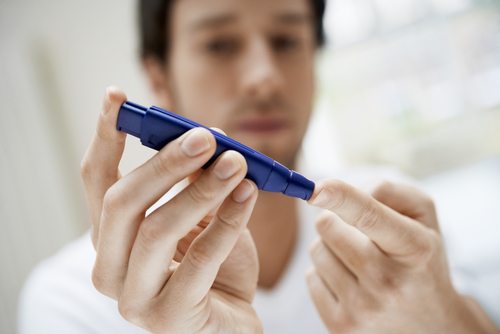 A new study entitled “Insulin resistance and associated factors in patients with Type 1 Diabetes” suggests that insulin resistance may be determined by measuring glucose disposal rate formula (eGDR) and insulin sensitivity score (ISS). The study was published in the journal Diabetology & Metabolic Syndrome.
A new study entitled “Insulin resistance and associated factors in patients with Type 1 Diabetes” suggests that insulin resistance may be determined by measuring glucose disposal rate formula (eGDR) and insulin sensitivity score (ISS). The study was published in the journal Diabetology & Metabolic Syndrome.
Type 1 diabetes is characterized by the destruction of the insulin-producing cells — beta cells in the pancreas — leading to increased levels of glucose in the blood. A condition known as insulin resistance is usually linked to another type of diabetes, type 2 diabetes, and is characterized by cells failing to respond to insulin signaling. However, insulin resistance has been reported in type 1 diabetes, but this association lacks experimental evidence.
Glucose clamp technique is a standard method to quantify insulin secretion and resistance, and can be performed with two different techniques. One of those, the hyperinsulinemic-euglycemic clamp technique, is the current method most used to measure insulin resistance. However, this technique is invasive and highly costly. Thus, in this study, the authors aimed to determine insulin resistance in type I diabetes individuals using two different mathematical formulas – estimated glucose disposal rate (eGDR) and insulin sensitivity score (ISS). While the first measures waist/hip ratio, history of systemic arterial hypertension and haemoglobin A1c level, the second formula measures waist size, level of glycated haemoglobin (A1c) and triglycerides.
The study enrolled 135 patients with type 1 diabetes with two-thirds of these patients being obese or overweight. After determining each parameter, including total and regional adiposity (by dual-energy X-ray absorptiometry) and skin fold thickness, the authors observed a positive correlation between eGDR and ISS and body-mass index, thoracic-abdominal fat, waist/height ratio, subscapular skinfold, total dose insulin IU/lean mass, age and duration of diabetes.
These findings support the potential to use clinical measurements to determine insulin resistance in type 1 diabetes patients. This new measurement, due to its non-invasive design and minor costs, represents a potential new alternative to determine insulin resistance and allows for early interventions in these patients.


